In this article:
Ganglion cysts are small fluid-filled bumps that occur near the joints. They are usually painless but may cause some mild pain or discomfort in some people.
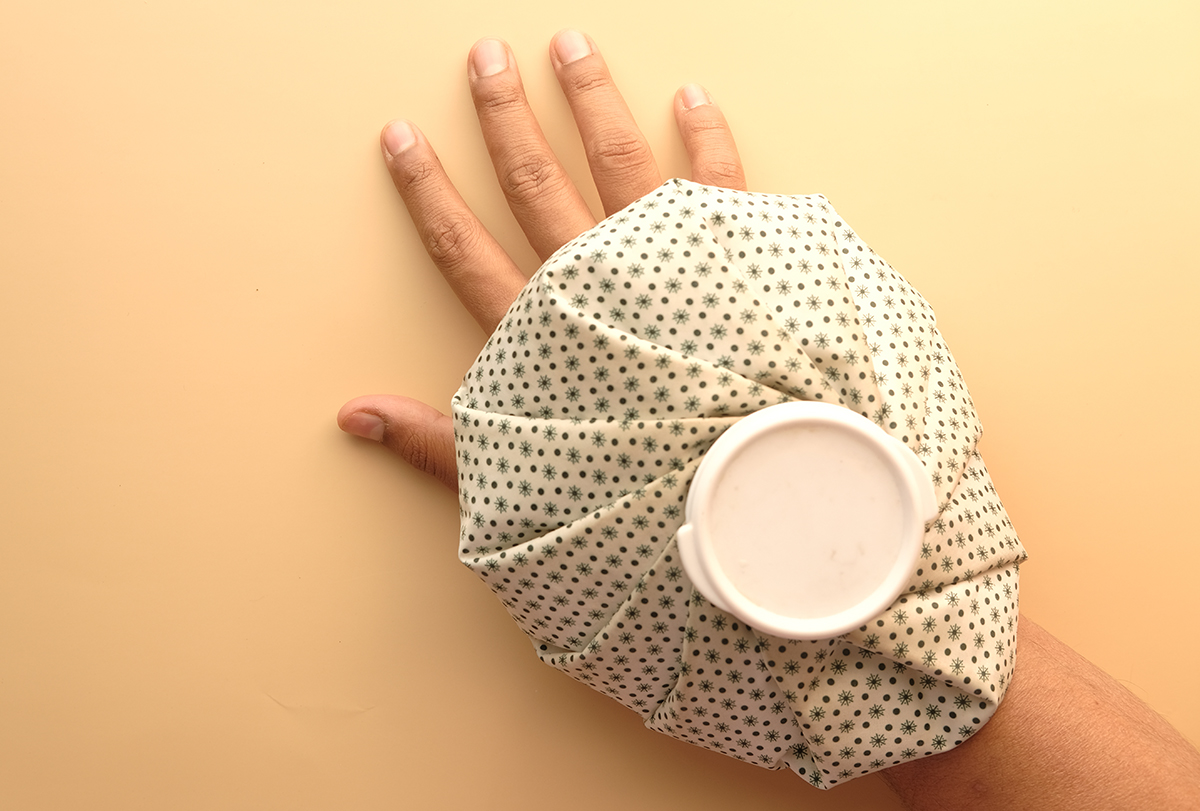
Fortunately, they tend to go away on their own and can be treated using some natural remedies.
At-Home Remedies for Ganglion Cysts
Here are some of the natural methods to manage ganglion cysts.
1. Apply turmeric on the affected area
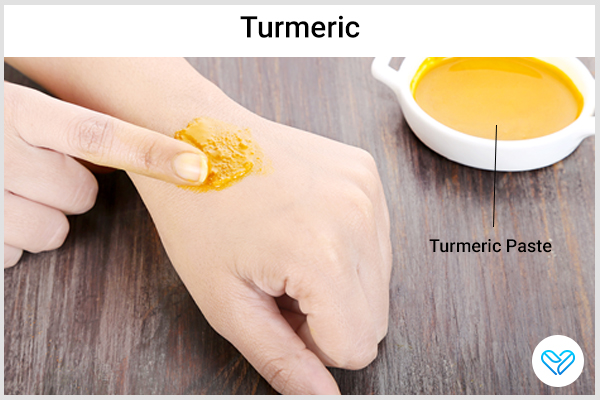
Turmeric is an age-old natural remedy for all kinds of inflammation. The active compound curcumin in turmeric helps reduce inflammation by interfering with the enzyme activity that causes it. (1)
Turmeric also exhibits antimicrobial and analgesic properties that can prevent infections and reduce pain. (2)
How to use:
- Mix a teaspoon of turmeric powder with a few drops of water to make a paste.
- Apply it on your cysts twice a day.
- Let it rest for half an hour before washing it off. (3)
2. Use aloe vera gel topically
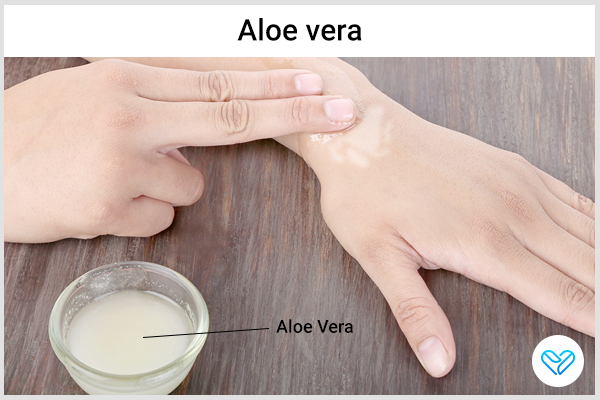
Aloe vera gel possesses soothing properties that may reduce inflammation and pain. It also contains antimicrobial compounds that can prevent secondary infections on the site. (4)
How to use:
- Scoop some fresh aloe vera gel from a leaf or use a store-bought one you trust.
- Apply the aloe vera gel all over the cyst and leave it for 15–20 minutes.
- Rinse it off and repeat the application several times a day.
3. Drink ginger tea
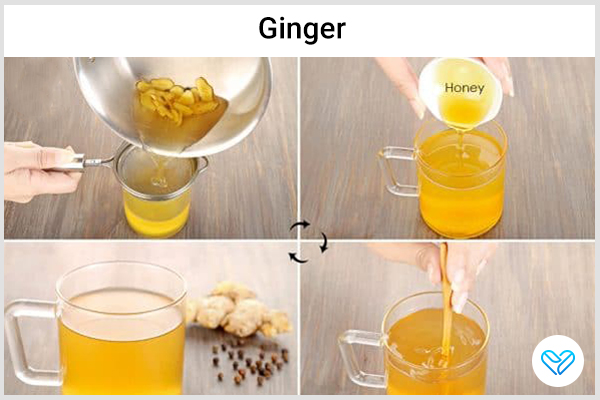
Ginger contains a potent antioxidant and anti-inflammatory compound called gingerol, which can help treat cysts by decreasing inflammation and pain. (5)
A recent study demonstrated the effects of gingerol in blocking pain signals by inhibiting Cox-2 activity. (6)
How to use:
- Brew a thinly cut one-inch piece of ginger in a cup of water.
- Strain the liquid and add some honey.
- Drink this ginger tea every morning.
4. Try apple cider vinegar
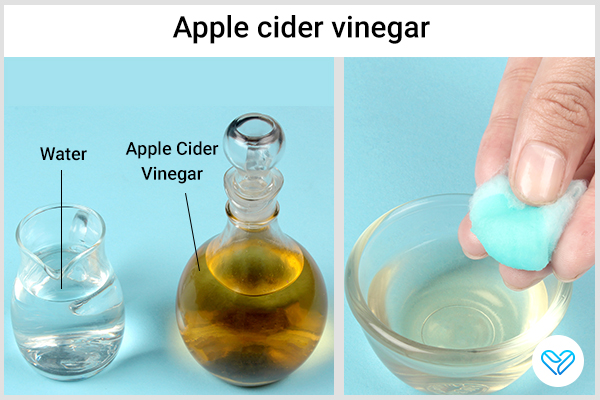
Apple cider vinegar (ACV) contains acetic acid, lactic acid, and malic acid, all of which exhibit anti-inflammatory properties. It may help reduce swelling and pain associated with cysts. (7)
How to use:
- Mix a few drops of apple cider vinegar in a tablespoon of water.
- Soak a cotton ball in this solution and apply it to the cyst.
- You can bandage it and leave it on overnight.
- Repeat a few times till the cyst shrinks. (8)
5. Use an Epsom salt soak
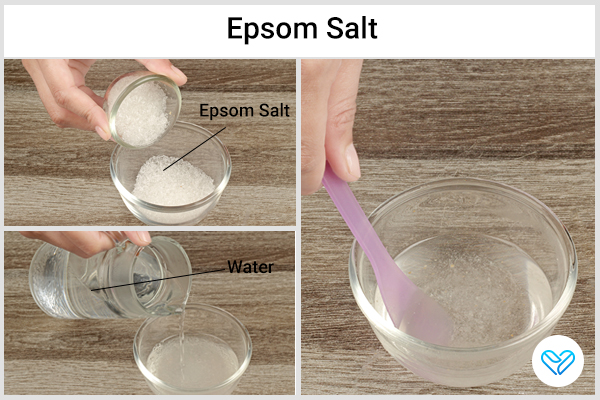
Epsom salt is rich in magnesium, which interferes with the activity of cytokines that cause an inflammatory response in the body. (9)
How to use:
- Add a couple tablespoons of Epsom salt to a cup of water.
- Soak a cotton ball or cloth in this solution, and apply it to the cyst for 15–20 minutes at a time.
- Repeat twice a day.
6. Apply a warm compress
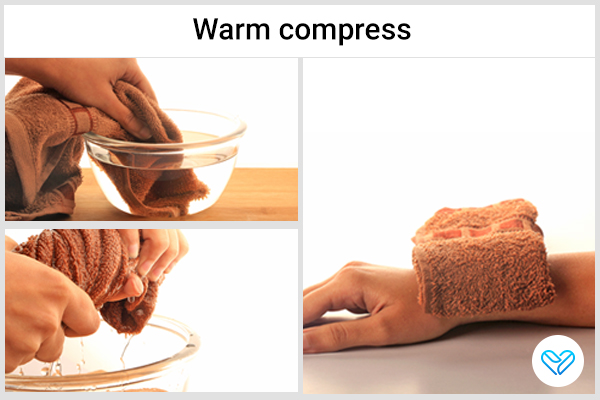
Warm compresses are the most effective and easy treatment for ganglion cysts. They help increase blood circulation to the area and decrease inflammation by allowing fluid drainage.
How to use:
- Soak a cloth in warm water and wring it to remove the excess water.
- Apply it to the affected area for 10 minutes.
- Repeat multiple times a day for best results.
7. Massage the affected area with tea tree oil
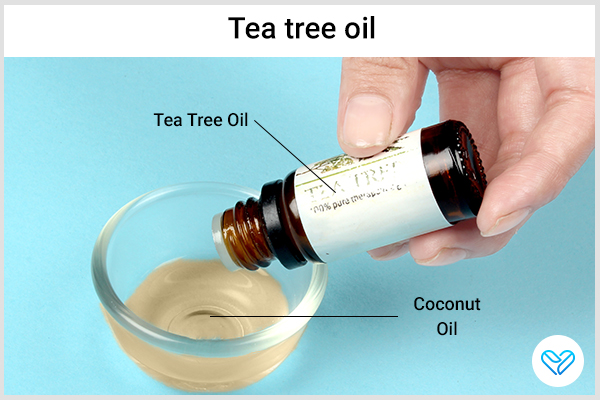
Tea tree oil has potent antiseptic and antioxidant qualities. It helps reduce swelling and also prevents secondary infections at the site. (10)
How to use:
- Add a couple drops of tea tree oil to a teaspoon of coconut oil and mix them well.
- Massage the area with this oil blend for a few seconds.
- Repeat twice a day.
8. Use frankincense oil
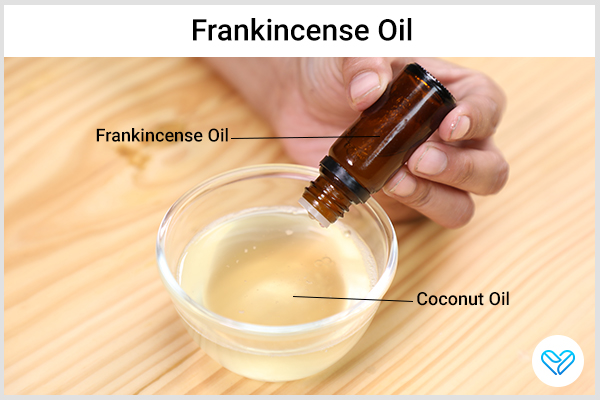
Frankincense oil has similar antioxidant and anti-inflammatory properties to tea tree oil. It has been shown to be effective in shrinking cysts (though more studies are still required for authentic scientific proof). (11)
How to use:
- Add 2–3 drops of frankincense oil to a teaspoon of coconut oil and mix them well.
- Apply this oil blend to the cyst.
Caution:
- Frankincense oil should not be used by pregnant or breastfeeding women or young kids or near mucous membranes such as the eyes and nose.
- Make sure to perform a patch test on a small area of skin before applying it to the cyst. If any irritation or allergic reaction occurs, do not use it.
- Never apply the oil directly to your skin without diluting it with a carrier oil.
Prevention of Ganglion Cysts
Here are some lifestyle changes you can make to prevent ganglion cysts:
- Exercise regularly.
- Drink at least 2 liters of water a day to remain hydrated.
- Practice good posture.
- Protect the joint from injury or strain.
- Lose weight if you are obese or overweight.
- Consume a healthy diet with enough protein, calcium, iron, vitamins, and other nutrients.
Final Word
Ganglion cysts are fairly common and tend to resolve on their own. You can try the home remedies given above to accelerate healing.
If you do not see any improvement or have pain and discomfort, visit a doctor to get treated medically.
 Continue ReadingGanglion Cysts: Causes, Symptoms, Diagnosis, and Treatment
Continue ReadingGanglion Cysts: Causes, Symptoms, Diagnosis, and Treatment
- Was this article helpful?
- YES, THANKS!NOT REALLY


